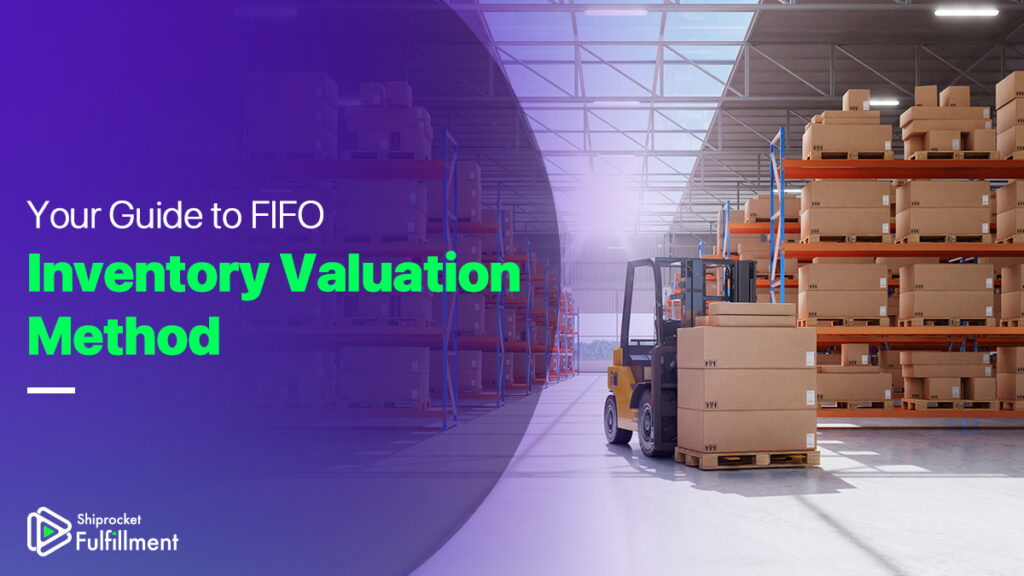Running an online business is not easy. You need to manage a lot of things, from providing excellent customer service to shipping orders on time. In all this chaos, inventory management is one thing that most sellers generally don’t give much thought to. While offering premium customer service and delivering orders on time is crucial, managing inventory and ensuring that you always have enough inventory to meet customers’ demands are vital.

And when it comes to maintaining accurate inventory records, keeping track of fluctuating inventory value is essential. One of the most common methods to ensure inventory records are accurate is the FIFO – First In, First Out method. This method suggests the oldest inventory is sold first, and the inventory value is calculated accordingly.
Read on to learn more about FIFO and its benefits and disadvantages.
What is the FIFO Method?
FIFO (First In, First Out) is an inventory valuation method that implies that the goods purchased first are sold first. Simply put, the oldest inventory is sold and shipped to customers before the newer ones. To calculate the cost of ending inventory, the cost of the products sold from the oldest inventory is used.
Inventory is an asset for eCommerce businesses. The cost of goods sold at the end of an accounting year helps determine the inventory write-offs, the closing inventory, and the impact on the balance sheet. With the FIFO method, the old goods are sold first and thus, the ending inventory can be of greater value since the goods’ value keeps fluctuating.
The FIFO method is essentially beneficial for perishable goods, has a shorter shelf-life, and gets obsolete quickly. However, using the FIFO method to calculate inventory valuation can sometimes create discrepancies if the cost of goods sold increases considerably.
LIFO VS FIFO
LIFO, or last in, first out, is the method where the goods purchased later are sold first. The most recently purchased inventory is sold first. This method is not very famous and is only used in US-based businesses. On the other hand, FIFO is the most used inventory valuation method, even accepted by IFRS regulations. While you can record the original COGS in the income statement with, you have to record the most recent inventory costs with LIFO.
With LIFO, the cost of goods sold is generally higher as the most recent inventory cost is used. Thus, the profits are decreased, leading to lower income tax. Therefore, the government is not in favor of the LIFO method. Therefore, compared to LIFO, FIFO is a more accurate and transparent method for inventory valuation.
Advantages of FIFO
Here are some points why the FIFO method is most preferred:
- The FIFO method is universally accepted. It is easy to understand and provides accurate values.
- FIFO is based on the natural flow of inventory – sell the old products first and account for their costs first. This eliminates the chances of mistakes. Plus, there is less waste in terms of obsolete inventory as the oldest inventory is moved first.
- A business that follows the FIFO method will have access to better market value. This is because the inventory that it holds is new, and the value is recent as well.
- As discussed, FIFO method lead to higher profits. Also, with the FIFO method, it becomes challenging to manipulate financial records. Thus, you have an accurate and up-to-date picture of your finances, and you can plan your business’ future accordingly.
Disadvantages of FIFO
With the FIFO method, you can have higher profits, which also means higher income tax. You also need to be careful in terms of not overstating the profits. This can happen when the product’s costs rise, and these numbers are used to calculate the COGS.

How FIFO Method Impacts Financial Statements
Let us now have a look at how using the FIFO method will impact your financial statements:
Inventory Valuation
By using the FIFO method to calculate inventory valuation, you show a recent value of your inventory. The current costs for manufacturing and acquiring inventory are also recorded in the financial records. Therefore, your financial records have the latest market inventory value.
Poor Match Between Revenue & Expense
Since the oldest products are sold first, the selling cost is matches with the outdated cost. Thus, there is a poor match between revenue and expense.
Leave Your Inventory Management to Shiprocket Fulfillment
You can leave your inventory management to us and focus on selling your products like a pro! Shiprocket fulfillment has 45+ fulfillment centers across India where you can store your inventory and save on shipping costs by storing inventory close to your buyers. Not just this, you also get access to the latest warehouse management systems and order management systems to scale your business to the new heights. Offer your customers one-day and two-day delivery options and become their favourite brand! Get started today.






